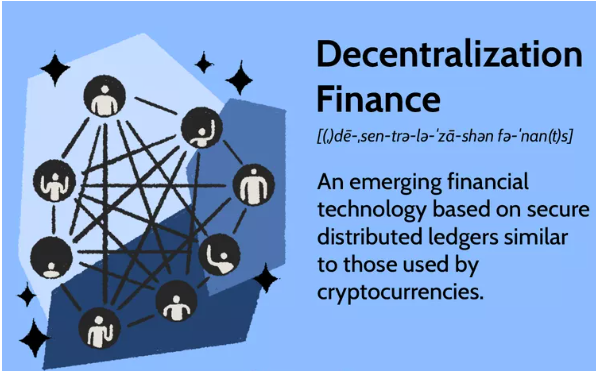What Is DeFi (Decentralized Finance) and How Does It Work?
Imagine a world where you can borrow money, earn interest, trade assets, and get insurance all without a bank, broker, or paperwork. That’s not science fiction. It’s the power of DeFi or Decentralized Finance.
DeFi is one of the most exciting innovations in the crypto space, offering an open alternative to traditional financial systems. But what is it really, and how does it work?
In this post, we’ll break down what DeFi is, how it works, and why it’s reshaping the future of finance.
What Is DeFi?
DeFi stands for Decentralized Finance a system of financial services built on blockchain technology, mostly using smart contracts on platforms like Ethereum, BNB Chain, and Solana.
Unlike traditional finance (TradFi), DeFi operates without intermediaries like banks, governments, or brokers. Instead, it uses code to execute transactions and manage assets.
How DeFi Works (In Simple Terms)
At its core, DeFi relies on:
1. Smart Contracts
Self-executing programs on the blockchain that run automatically when conditions are met. No need for middlemen.
2. Decentralized Applications (dApps)
Apps built on blockchains that allow users to access DeFi services like lending, borrowing, trading, and staking.
3. Cryptocurrencies & Tokens
Used as collateral, payment, or rewards within DeFi protocols (e.g., ETH, USDC, DAI, UNI).
4. Liquidity Pools
Crowdsourced pools of tokens that power decentralized exchanges and lending platforms. Users provide funds and earn fees or interest.
Key Features of DeFi
-
Open access: Anyone with a crypto wallet and internet connection can use DeFi no ID or credit check required.
-
Permissionless: No gatekeepers or approvals needed.
-
Transparent: All transactions and code are visible on public blockchains.
-
Programmable: Financial services are automated and customizable through smart contracts.
What Can You Do with DeFi?
DeFi isn’t just about buying crypto it unlocks a full range of financial services:
✅ 1. Lend & Earn Interest
Deposit your crypto into lending protocols like Aave or Compound to earn yield.
✅ 2. Borrow Assets
Use your crypto as collateral to borrow stablecoins or other tokens useful without selling your holdings.
✅ 3. Swap Tokens
Trade tokens on decentralized exchanges (DEXs) like Uniswap, PancakeSwap, or SushiSwap.
✅ 4. Provide Liquidity
Earn fees by adding your tokens to liquidity pools used in DeFi trading.
✅ 5. Yield Farming
Maximize returns by moving crypto across different platforms to earn the best APYs.
✅ 6. Buy Insurance
Use DeFi insurance protocols (like Nexus Mutual) to protect against hacks or smart contract failures.
Top DeFi Platforms to Know
| Platform | Function |
|---|---|
| Uniswap | Token swapping (DEX) |
| Aave | Lending and borrowing |
| Compound | Interest-earning lending |
| Curve | Stablecoin swaps |
| MakerDAO | Creator of DAI stablecoin |
| SushiSwap | DEX with yield farming |
| Balancer | Automated portfolio manager |
| Yearn Finance | DeFi yield optimizer |
Risks and Challenges of DeFi
While DeFi offers great potential, it’s not without risks:
-
Smart contract bugs A single flaw can be exploited by hackers.
-
Impermanent loss Happens when providing liquidity in volatile pairs.
-
Rug pulls Scam projects that disappear with users’ funds.
-
High gas fees Especially on networks like Ethereum during congestion.
-
Regulatory uncertainty Governments are still figuring out how to handle DeFi.
Always DYOR (Do Your Own Research) and never invest more than you can afford to lose.
Getting Started with DeFi
Here’s what you need:
-
Crypto Wallet: Install a wallet like MetaMask, Trust Wallet, or Coinbase Wallet.
-
Tokens: Buy ETH, USDC, or other crypto from an exchange.
-
Connect to a dApp: Go to a platform like Uniswap or Aave and connect your wallet.
-
Start Small: Try swapping a token or staking in a pool to learn how it works.
Final Thoughts on What Is DeFi (Decentralized Finance) and How Does It Work?
DeFi is transforming how we think about money, offering anyone the chance to access powerful financial tools no bank account required. It’s fast, global, and open by design.
But with great opportunity comes great responsibility. Learn the basics, stay alert to risks, and start small before diving deep.


